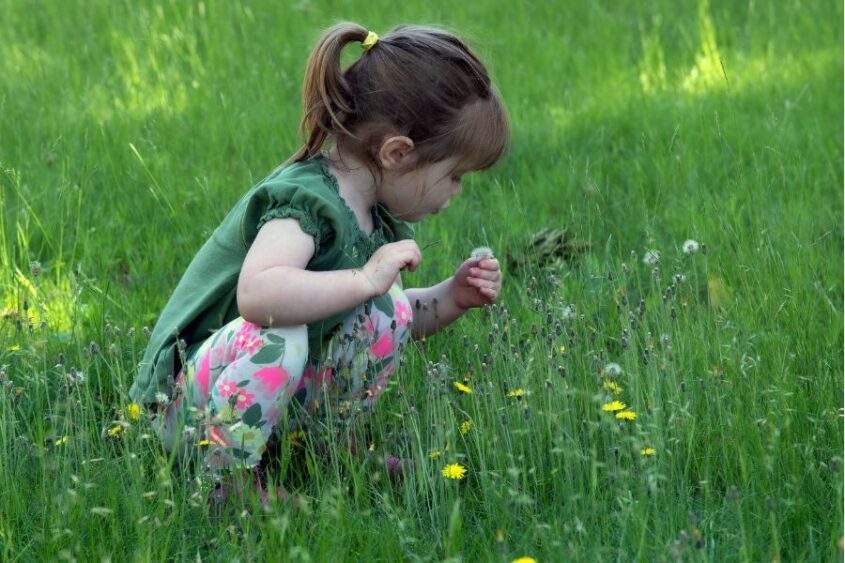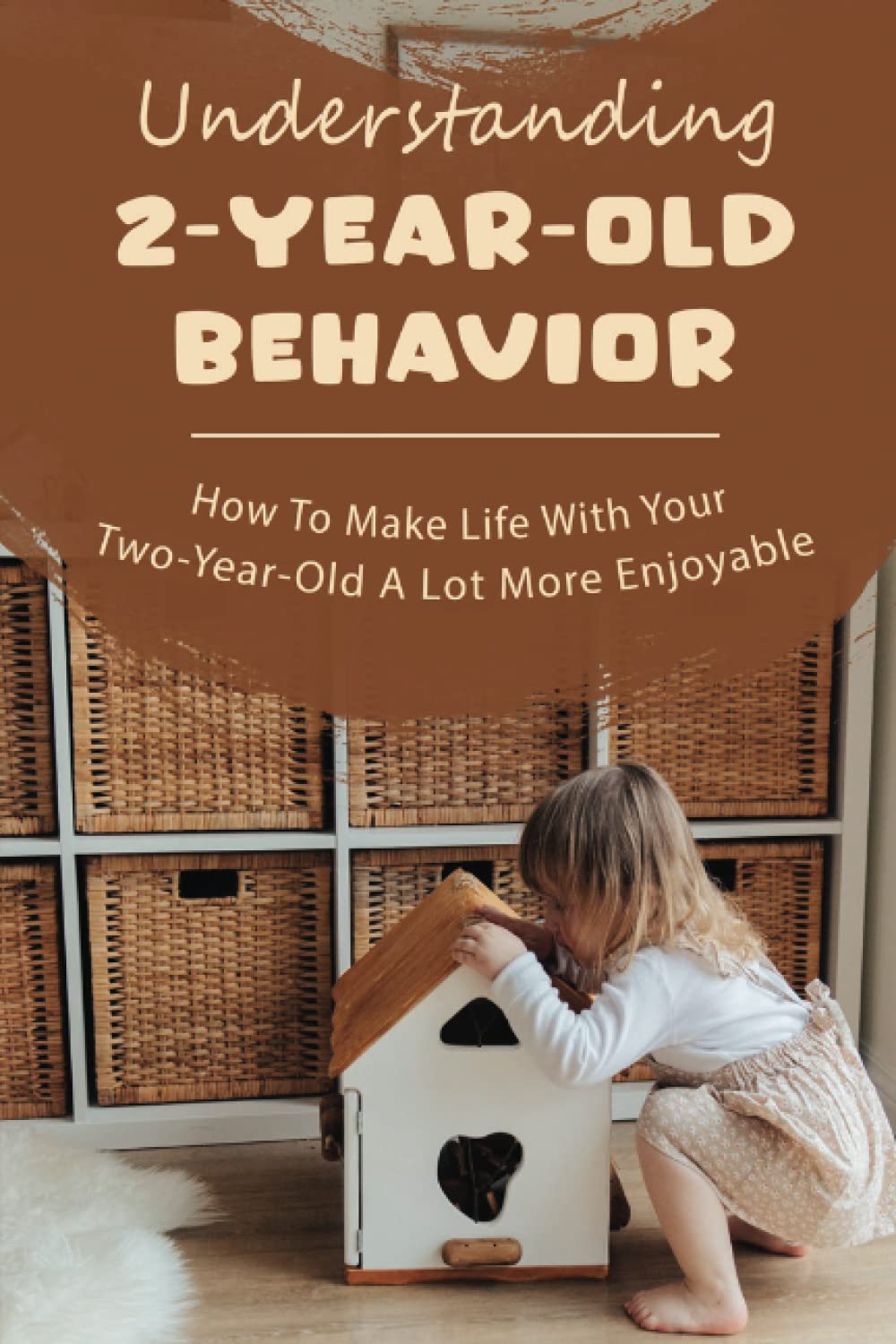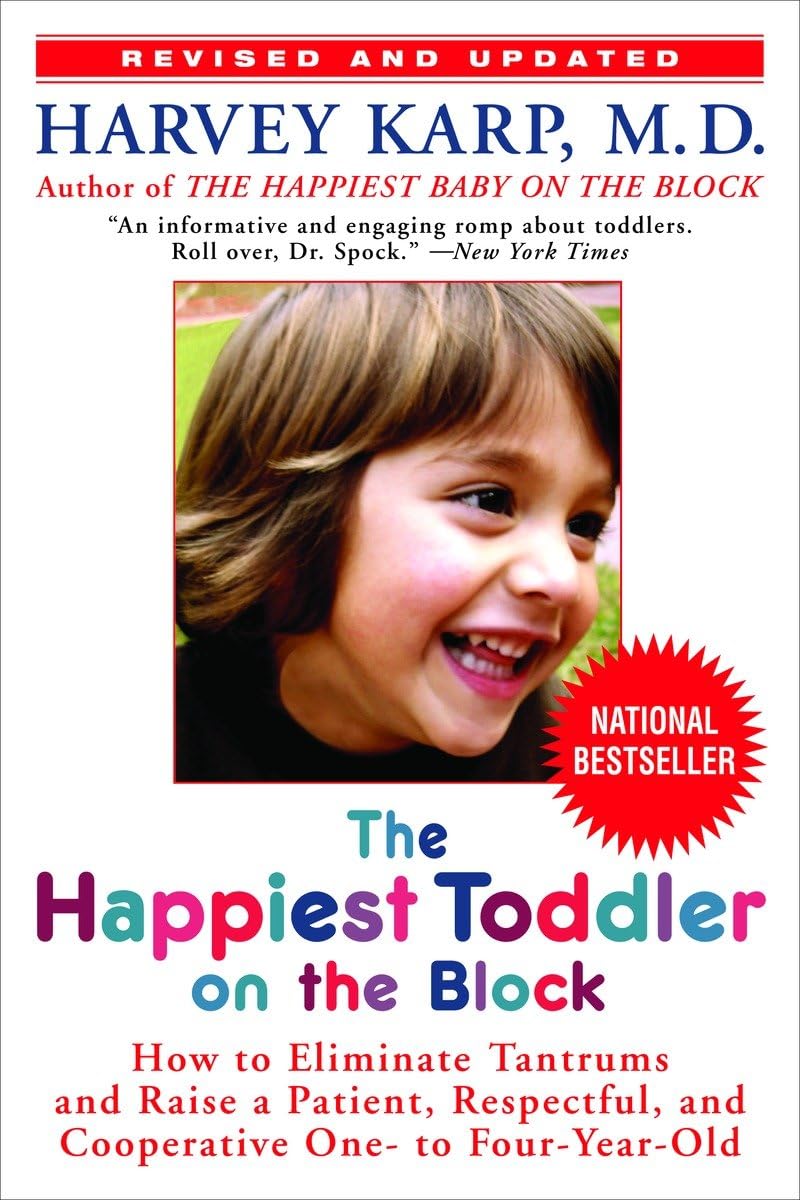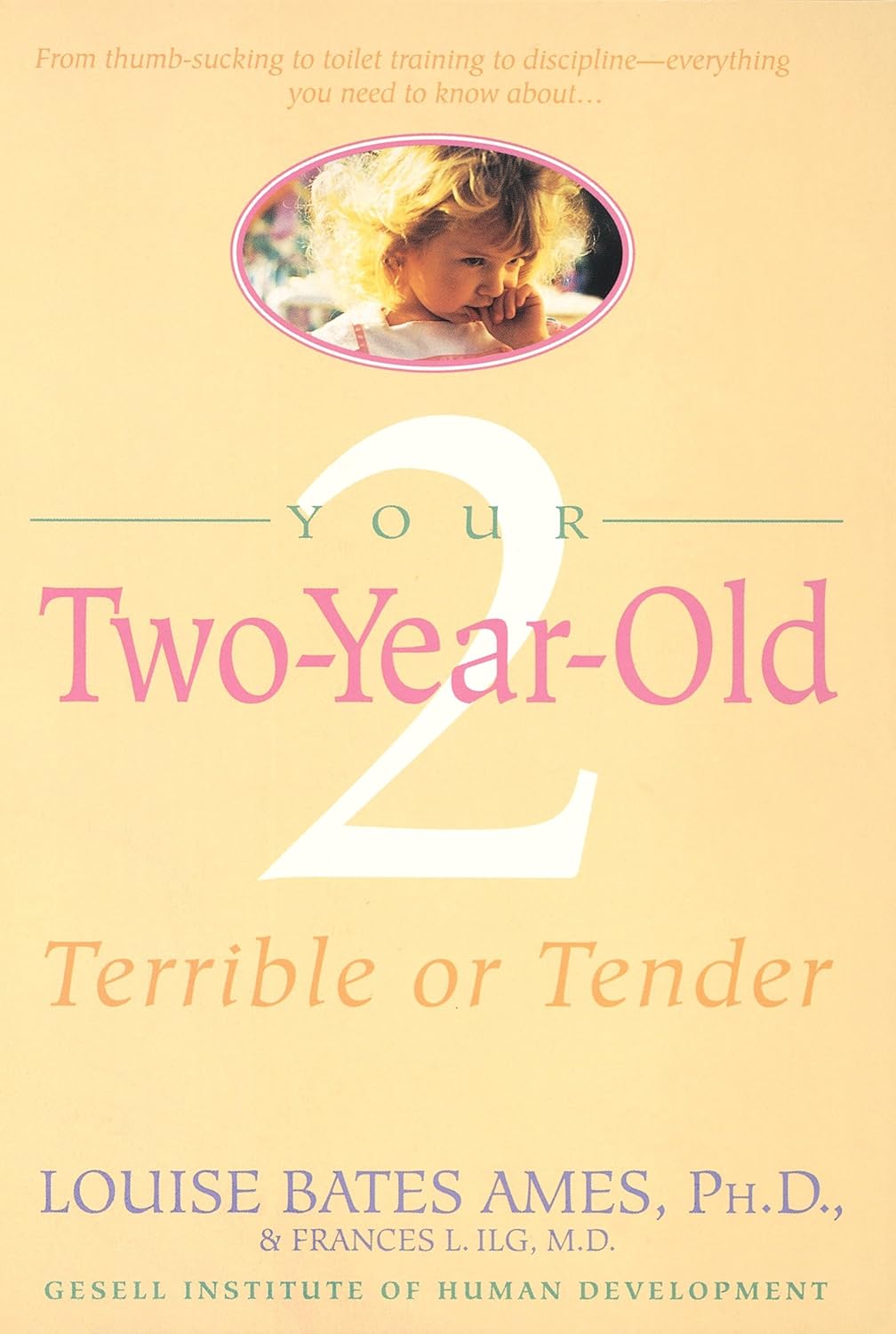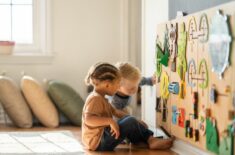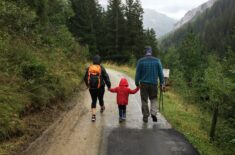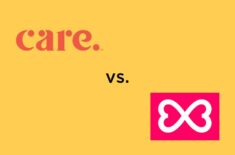Welcome To The Toddler Years
Parenting a 2-year-old is an adventure filled with joy, challenges, and significant developmental milestones. If your toddler is frequently saying “no,” throwing temper tantrums, having sleep regression, or refusing to share toys or food, rest assured these behaviors are typical for their age. Understanding these developmental stages can help you navigate this crucial period with more ease and patience.
Common 2-Year-Old Behaviors
Your toddler is primarily driven by their developmental limitations and needs:
Temper Tantrums
According to the Mayo Clinic, temper tantrums are 2-year-olds’ expressions of limitations or frustrations over not getting what they want. Toddlers have difficulty expressing themselves at this age, possibly triggering an outburst. (1)
Possessiveness
It’s also normal for 2-year-olds to keep saying “mine” and refusing to share. (2)(3)
A survey by nonprofit organization ZERO TO THREE, showed that 43% of parents believe kids must master sharing by two years old. However, this skill is often learned by 3.5 to 4-year-olds. (3)
Toddlers find it difficult to share because they haven’t learned empathy and find it difficult to put themselves in other kids’ shoes. Their developing brains haven’t gotten there yet. (3)
The Era of ‘No’
You might also find your toddler saying “no” a lot. It’s their way of asserting their independence and testing boundaries. For toddlers, “no” is a powerful word that often gets the adults’ attention. So, they use it often, even to gauge your reaction (they might not really mean “no”). (4)
Sleep Regression
Excitement over new skills, like potty training, can disrupt their sleep patterns. Additionally, they might need fewer naps as they grow. (5)(6)
Parenting can be both frustrating and difficult, especially for first-time parents. It’s important to remember that there isn’t a one-size-fits-all parenting tip that works for every child.
Understanding what to expect with your two-year-old can help you navigate various situations and better understand your toddler.
Let’s dive deeper into your 2-year-old’s developmental milestones, behavioral expectations, child care strategies, and practical parenting tips. We’ll also address safety concerns and how to minimize potential risks for your child.
Important Terminologies
Is A 2-Year-Old A Toddler?
Yes. The toddler age ranges from one year to three years old or 12 to 36 months.
Which Is Correct, “2 Year Old” Or “2 Years Old”?
The terminologies are both correct, depending on how you use them:
- “2 year old” (actually spelled “2-year-old”) is an adjective of age; for example, “My 2-year-old son loves dinosaurs and trains.”
- “2 years old” refers to the actual age and usually comes after the auxiliary verb, “be” (am, are, is, was, and were); for example, “My son is 2 years old.” or “I met the twins when they were 2 years old.”
Developmental Milestones: What Should My 2-Year-Old Be Doing?
The AAP (American Academy of Pediatrics) explains that no two children will develop at the exact rate. However, most babies go through development milestones at roughly a similar pace. (7)(8)
Knowing what a 2-year-old should be doing also helps you monitor your child’s health and determine whether your toddler might have learning disabilities/delays or developmental issues. It will also help you acknowledge that there are certain milestones you can expect for older children that you’re unlikely to observe with your toddler.
Below are activities and milestones your two-year-old should be doing, according to the AAP, CDC (Centers For Disease Control And Prevention), and healthychildren.org (also by the AAP). (7)(9)(10)
What Is The Normal Behavior & Emotional Development Of A 2-Year-Old?
Some behavioral expectations and emotional milestones for 2-year-olds: (2)(7)(10)
- Shows temper tantrums and impulsivity (e.g., they might hit others if they’re angry or frustrated)
- Shows defiance (doing the opposite of what they’re told to do or not do) and says “no” often)
- Shows and asserts independence
- Tests your response (power struggles) and checks your reaction (e.g., looks at your face to see how to react to a certain situation)
- Becomes aware of themselves as individuals (e.g., they’re small but different from their parents and caregivers)
- Stops playing and observes when they notice someone crying, throwing a tantrum, getting angry, etc.
- Learning to understand the concept of sharing
- Learns to dress and undress by themselves
Cognitive & Learning Milestones Of A 2-Year-Old
Here are developmental milestones for 2-year-old learning: (2)(9)(10)
- Knows their own name and age
- Knows if they’re a boy or girl
- Shows increased memory
- Completes or memorizes parts of familiar stories and rhymes
- Points at objects, such as when reading picture books
- Copies or mimics behaviors or actions (especially by older people or siblings)
- Tries to understand or check how things work
- Plays make-believe or imaginative games
- Counts around three or more objects
- Knows some letters
- Tries problem-solving (e.g., playing with toys they need to figure out how to use, such as puzzles)
- Wants to learn how stuff works
- More eager to help around the house (e.g., sweep the floor, wash dishes, feed pets, etc.)
Physical Development & Growth Of A 2-Year-Old
Growth and physical development milestones that your pediatrician might also ask during regular healthcare check-ups: (9)(10)
- Grows most milk teeth before turning three years old
- Begins to have bladder control and may show readiness signs for toilet training
- Sleeps for 10-12 hours at night
- Might still take afternoon naps
- Might experience a 2-year-old sleep regression
Several factors, including genetics, influence your child’s growth. However, while kids grow at varying rates, here are the averages for both genders: (11)
- Average height increase of around 2-3” per year
- Average weight gain of around 4-6 lbs per year
Communication & Language Development Of A 2-Year-Old
Here are some language skills that you can expect from your 24-month-old toddler: (7)(9)(10)
- Imitates words and short phrases
- Strings two or three words together to create a phrase
- Seeks attention and shows you (or other caregivers) what they can do (e.g., might say, “Look at this!” “Look at me!” or “I did this!”)
- Repeats words they overhear (especially something they hear often)
- Names at least two common or basic body parts
- Knows people’s names (especially family members and familiar people)
- Knows a wider vocabulary and says several words (about 200-300 words)
- Shakes head to indicate “no”
- Knows more gestures (e.g., nods head to say “yes”)
How Many Words Do 2-Year-Olds Know?
- About 200 to 300 words
Social Skills & Milestones Of A 2-Year-Old
Some social milestones you can expect for 2-year-olds: (7)(9)(10)
- Parallel plays (plays alongside other kids but without interaction)
- Enjoys playing with other children (even for brief moments)
- Shows preference for certain people
- Shows preference for certain toys or favorite stuff
- Gets excited when seeing and being around other kids
- Plays tag or chases other kids
What Do 2-Year-Olds Understand?
Your two-year-old might already grasp the following concepts: (7)(9)(10)
- Understands spatial concepts and builds block towers
- Understands and names objects or things in books, such as familiar objects and animals
- Understands color and shape concepts
- Understands and follows two-step commands or simple instructions
- Understands and puts together simple puzzles
- Understands object permanence and can find hidden things (even under two or more layers/covers)
- Understands how some things work (e.g., opening a bottle or container)
- Understands the concept of ownership or possession (usually “mine”)
Balance, Coordination, Movement, & Motor Development Of A 2-Year-Old
Some of the movement milestones for your toddler: (2)(9)(10)
- Walks without assistance
- Stands on tiptoe
- Runs or starts to run
- Kicks a ball or other objects forward
- Throws a ball
- Walks up and down stairs
- Jumps and skips (might still do these awkwardly)
- Climbs on furniture, playground structures, and other fixtures without assistance
- Has some concept of motion and plays with pushes-and-pull toys
- Undresses by themself
- Balances and carries several toys or a large toy while walking
- Stands or skips on one foot
- Learns how to use ride-on toys, balance bikes, tricycles, etc.
Nutrition & Feeding Milestones For 2-Year-Olds
Mealtime expectations for your little one: (2)(11)
- Uses dining utensils (e.g., cups, glass, and spoons) properly
- Appetite might decrease
- Might already have food preferences and ask for extra servings of their favorite foods
- Knows how to use a sippy cup or straw
- Explains certain mealtime behavior (e.g., can give a reason why they’re throwing food they don’t like or illustrate how to use utensils properly)
Fine Motor Skills & Milestones For 2-Year-Olds
Milestones for your two-year-old’s fine motor skills: (9)(10)(12)
- Knows how to scribble or doodle
- Knows how to open or turn lids, knobs, etc.
- Knows how to turn a book’s pages
- Knows how to control their fingers and thumbs (e.g., holding and using a pencil or crayon)
- Pours out a container’s contents and sometimes puts them back in
- Plays with two or more objects simultaneously (e.g., ‘cooking’ some food with a playset)
- Shows right- or left-handedness
- Strings beads or ties their shoelaces
- Tries to imitate designs (e.g., crosses, shapes, etc.)
- Likes draw or color
Handling Developmental Delays For 2-Year-Olds
When To See Your Doctor
Talk to your child’s pediatrician if you notice delays in their development based on the lists we provided above. Examples of warning flags for two-year-olds include: (9)(10)
- Not talking or has a vocabulary of less than 15 words by 18 months
- Not walking (by 18 months)
- Walking on their toes instead of the heel-toe pattern
- Doesn’t push or pull toys
- Doesn’t or couldn’t follow simple instructions
- Doesn’t imitate sounds or actions
- Doesn’t use or create two-word phrases
- Doesn’t know common body parts or the names of regular household objects
Things To Tell Your Pediatrician
- Your baby’s birth and medical history (if it’s your first check-up with them, such as if you previously had a different pediatrician)
- Possible developmental delays or observations
- Skills your toddler might have lost (e.g., they knew how to use a spoon or pencil but suddenly have difficulty using them)
- Any concern you might have about their skills, development, or activities they might like
Effective Parenting Tips For Dealing With 2-Year-Olds
Promoting & Encouraging Your Toddler’s Development
Fun & Age-Appropriate Activities For Your 2-Year-Old
Some activities to help promote your toddler’s development: (2)(7)(9)
- Play helps your child learn and also builds relationships and friendships with peers.
- Physical activity promotes motor skills development, balance, and coordination.
- Offer toys for pretend play or allow them to dress up.
- Let kids help with child-safe household chores (you can also provide them with age-appropriate tools).
- Foster creativity with age-appropriate crafts, music, and arts, such as finger painting, learning how to play simple musical instruments (e.g., drums for toddlers), building blocks, etc.
- Promote learning through activities and experiences.
- Allow kids to play with bath toys but with adult supervision.
- You can be your child’s first teacher by introducing them to numbers, shapes, letters, body parts, etc., even during playtime.
Age-Appropriate Toys For 2-Year-Olds
- Best toys for 2-year-olds
- Developmentally friendly toys for 2-year-olds
- Educational toys for 2-year-olds
- Toys for pretend play
- Toys for active play (e.g., ride-on toys, bicycles, balls, Montessori climbing toys, etc.)
- DIY Montessori toys
Disciplining Your 2-Year-Old
Some positive discipline tips for your two-year-old: (1)(3)
- We recommend working through ‘The Whole Brain Child’ book to help with mindful discipline strategies. (Linked below)
- Don’t tolerate negative behavior, but try to catch them doing the opposite, which is expected behavior. Offer praise for ‘good’ behavior instead of just highlighting the ‘bad’ one.
- Set boundaries, establish routines, and be consistent.
- Try to stay calm. (You might have to work more on yourself to self-regulate)
- Help your toddler understand the importance of empathy and sharing. (Model empathy to them yourself.)
- Offer ‘emotion coaching’ by helping your child understand how they feel and know that their feelings are valid (e.g., feeling bad because they have to wait for their turn).
- Guide your toddler in finding solutions to their situation (empowering your toddler also helps reduce power struggles).
- Help them learn about behavioral expectations and social skills – then praise good behavior.
- Ensure everyone’s safety, especially when toddlers become aggressive (e.g., hitting, kicking, throwing things, grabbing, etc.). Step in and firmly stop the behavior, removing your child from the situation if needed.
- Slow things down and offer to talk about the situation.
- Consider long turns (e.g., they can play for as long as they want but also let the other kid/s play with the toy for as long as they want) or use a timer for each kid’s turn.
- Plan ahead and anticipate how your child might react to the situation (e.g., bring their favorite toy or book to keep them busy while waiting in a long queue at the supermarket).
Encouraging Your 2-Year-Old & Dealing With The “No” Stage
Here are some tips on how you can minimize opportunities for your two-year-old to say “no”: (4)(11)
- Create predictable boundaries, routines, and expectations (e.g., repetitive bedtime routines) that empower your toddler.
- ‘Catch’ them doing good and praise positive behavior instead of focusing on their ‘no’ response. For example, instead of “No running and jumping around before bedtime.” consider empowering your toddler by saying, “Good job for changing into your PJs. Would you like us to read one or two bedtime stories tonight?”
- Choose your battles — you can’t always say “no” to your toddler. Consider saying “yes” or compromising in certain situations. For example, if your toddler wants a second bedtime story before sleeping, you might consider incorporating a second story into their nightly routine.
- Avoid using “no” when conversing with your toddler. Offer them with other choices instead. For example, instead of saying, “No, you can’t have your bedtime story if you don’t brush your teeth.” you can say, “Okay. You can have your bedtime story after you brush your teeth.”
Your toddler will likely continue saying “no” until they move on to their next big word. You don’t always have to correct them. Understand that it’s a healthy, common part of child development. (4)
Promoting Your 2-Year-Old’s Emotional Security & Cognitive Development
Other positive and gentle parenting tips for your toddler’s emotional security and cognitive learning: (4)(11)
- Offer praise and encouragement when they do something good. Positive encouragement helps build their self-worth and can make your child want to repeat the same action (desired behavior) without power struggles.
- With gentle parenting, you can validate your child’s feelings while still being firm with what they’re expected to do. For example, if they refuse to go out of the house for a grocery trip, you can say, “I know you love staying home and playing with your toys. However, we need to get important stuff from the store. Can you help me find the things we need to put in our shopping cart?”
Keeping Your 2-Year-Old Safe & Promoting Healthy Bodies
- Offer healthy foods, but don’t force them to eat as much as you want; let them take the lead, similar to baby-led weaning.
- Create and follow steady routines, especially with feeding and sleeping.
- Choose an age-appropriate toothbrush and toothpaste (we recommend fluoride-free toothpaste).
Sleep For 2-Year-Olds
- Keep sleep routines steady (e.g., bedtime at the same time each night)
- Two-year-olds need around 11 to 14 hours per day (including naps) (6)
- Sleep regression is common for two-year-olds
Reduced Screen Time For 2-Year-Olds
- Limit screen time because it can cause sleep regression, behavioral problems, and other issues. (11)(13)
- Consider limiting screen time to only one hour per day, sticking with children’s programs, and ideally with adult supervision. (11)(13)
- Avoid TVs or other screen gadgets in your toddler’s bedroom.
Common Causes Of 2-Year-Old Deaths – And How To Avoid The Risks
Drowning is the primary cause of accidental deaths for children ages 1-4. Here are some ways to reduce your toddler’s drowning risks: (14)(15)
- Never leave your toddler unattended while bathing or swimming (even in a bathtub at home).
- Enroll your toddler in swimming lessons or teach them how to swim.
- Be extra vigilant when swimming in natural waters, such as rivers, lakes, and beaches, due to unexpected dangers such as flash floods and riptides.
- Babyproof your home to ensure your toddler doesn’t have access to swimming pools, water bodies, or the bathroom (e.g., use baby gates).
- Be extra vigilant with kids who have medical conditions, including epilepsy or autism, because they have higher drowning risks.
- Avoid alcohol and recreational drugs when chaperoning kids swimming; some medications can also make you feel drowsy or impair your senses and make your brain foggy.
Motor vehicle or traffic accidents rank next to drowning for major causes of accidental deaths for the 1-4 years old range. Some ways to keep your two-year-old safe: (14)
- Use and safely secure a toddler car seat.
- Always let your kids use a car seat, even with short trips.
- Avoid using car seat protectors unless your car seat manufacturer approves it.
- Monitor car seat and baby product recalls.
Toy-related deaths can also happen, especially to younger children who have increased choking, suffocation, and injury risks. Some ways to reduce the risks: (16)
- Choose age-appropriate toys (e.g., toys with small parts aren’t appropriate for kids younger than 3 years old)
- Always check for choking or injury risks, especially with older or used toys
- Monitor toy recalls
Some Books For Parents With 2-Year-Olds
- Understanding 2-Year-Old Behavior
- The Happiest Toddler on the Block
- Your Two-Year-Old: Terrible or Tender
References
(1) https://www.mayoclinic.org/healthy-lifestyle/infant-and-toddler-health/in-depth/tantrum/art-20047845
(2) https://www.chhs.niu.edu/child-center/resources/articles/terrible-twos.shtml
(3) https://www.zerotothree.org/resource/helping-young-children-with-sharing/
(4) https://www.brighthorizons.com/resources/article/toddlers-and-twos-the-no-stage
(5) https://www.ncbi.nlm.nih.gov/pmc/articles/PMC7940085/
(6) https://jcsm.aasm.org/doi/10.5664/jcsm.5866
(7) https://www.aap.org/en/patient-care/early-childhood/milestone-timeline/
(8) https://publications.aap.org/patiented/article-abstract/doi/10.1542/peo_document113/80146/Developmental-Milestones-Ages-2-Months-to-5-Years?redirectedFrom=fulltext
(9) https://www.cdc.gov/ncbddd/actearly/milestones/milestones-2yr.html
(10) https://www.healthychildren.org/English/ages-stages/toddler/Pages/Developmental-Milestones–2-Year-Olds.aspx
(11) https://www.hopkinsmedicine.org/health/wellness-and-prevention/the-growing-child-2yearolds
(12) https://www.chrichmond.org/services/therapy-services/developmental-milestones/fine-motor-skills-2-to-5-years
(13) https://www.sleepfoundation.org/napping/how-long-should-a-2-year-old-nap
(14) https://wisqars.cdc.gov/lcd/?o=LCD&y1=2022&y2=2022&ct=10&cc=ALL&g=00&s=0&r=0&ry=0&e=0&ar=lcd1age&at=groups&ag=lcd1age&a1=0&a2=199
(15) https://www.watersafetyusa.org/nwsap.html
(16) https://www.cpsc.gov/s3fs-public/Toy-Related-Deaths-and-Injuries-2022-Annual-Report.pdf


